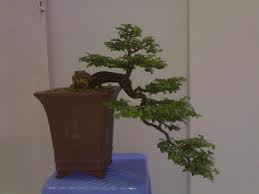 If you have decided to try your hand at growing a bonsai tree, you are in for a real treat. While it takes a little time and patience to learn how to grow bonsai, the results are truly incredible. As you begin your search for the perfect tree, you will be faced with all types of options. For example, bamboo is a nice bonsai option that is reminiscence of true Japanese gardens. Then, you have the Braided Monkey Tree that is referred to in many Asian cultures as the “Bringer of Good Fortuneâ€. When it comes to bonsai, this makes an excellent choice that is easy to care for and tolerant. Another option for bonsai is Jade tree, which makes an exceptional bonsai. Coming from South Africa, this plant is hearty and boasts succulent, green elliptic leaves and a thick trunk.
If you have decided to try your hand at growing a bonsai tree, you are in for a real treat. While it takes a little time and patience to learn how to grow bonsai, the results are truly incredible. As you begin your search for the perfect tree, you will be faced with all types of options. For example, bamboo is a nice bonsai option that is reminiscence of true Japanese gardens. Then, you have the Braided Monkey Tree that is referred to in many Asian cultures as the “Bringer of Good Fortuneâ€. When it comes to bonsai, this makes an excellent choice that is easy to care for and tolerant. Another option for bonsai is Jade tree, which makes an exceptional bonsai. Coming from South Africa, this plant is hearty and boasts succulent, green elliptic leaves and a thick trunk.
One of the favorites is the ficus tree. A miniature version of the tropical Banyan tree, the ficus is exotic and rewarding. Therefore, we suggest you start with this species and to help you get started, we have provided you with important ficus bonsai care. Remember, the ficus is ideally suited for indoor bonsai. You will discover a number of different varieties, each with small leaves and slow growth habits. Some of the specific species you might consider growing include the dwarf ficus, narrow-leaf ficus, and the weeping ficus, all fine choices.
The first thing to remember when it comes to ficus bonsai care is that this tree needs to be kept indoors all year long, although an occasional trip outdoors for fresh air and sunshine is acceptable. As with most bonsai trees, the ficus tree should dry out between watering. To test the soil, simply stick your finger down about an inch to see if it feels wet or dry. The key with ficus bonsai care is never allow the tree to go completely dry for any extended time. To water your tree, soak it and/or the container it sits in, in water for about 10 minutes. Then, allow the soil to drain so no more water leaks from the bottom.
Repotting is also important for ficus bonsai care. The recommendation is to repot the tree every two years. Now, keep in mind that while the ficus typically grows slow, if you notice the tree is having a growth spurt, completely taking over its container within the first year, do no wait to repot, go ahead and do the repotting in the first year. The best time to repot a ficus bonsai is during early spring months. Once the tree has been placed in its new container (larger of course), be sure you water it thoroughly, using the same process as described above. Then, you want to keep your ficus bonsai some place shade for two to three weeks, allowing the new root system to take hold. With this, you will enjoy a much healthier and stronger plant that when it comes time to trim and prune, handles the process better.
Finally, ficus bonsai care means understanding your tree during the cold, winter months. This particular tree should always be kept indoors, especially in the winter. Even then, make sure you keep them on display in a sunny area that never goes below 60 to 65 degrees. Now, you may notice some minor leaf drop if the temperatures are too cool for the tree or if the ficus is getting too much of a draft. In this case, you can simply choose a different location, again in the sun but warmer and without the draft. With ficus bonsai care, it is not rocket science, but consistency and understanding the ficus. As you begin to trim back the tree during its growing season and using wire to create the shape you have chosen and the one that works best with this species, you will begin to notice things changing from a simple tree in a container to an actual bonsai. Chances are you will be so proud of your accomplishments, you will be eager to try another ficus bonsai or perhaps one of the other mentioned species.

Deprecated: strpos(): Passing null to parameter #1 ($haystack) of type string is deprecated in /home/agriviek8Qv/agriviet.net/public_html/wp-includes/comment-template.php on line 2522